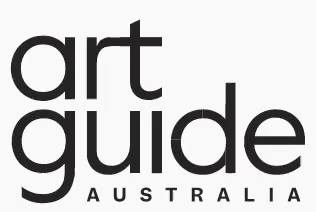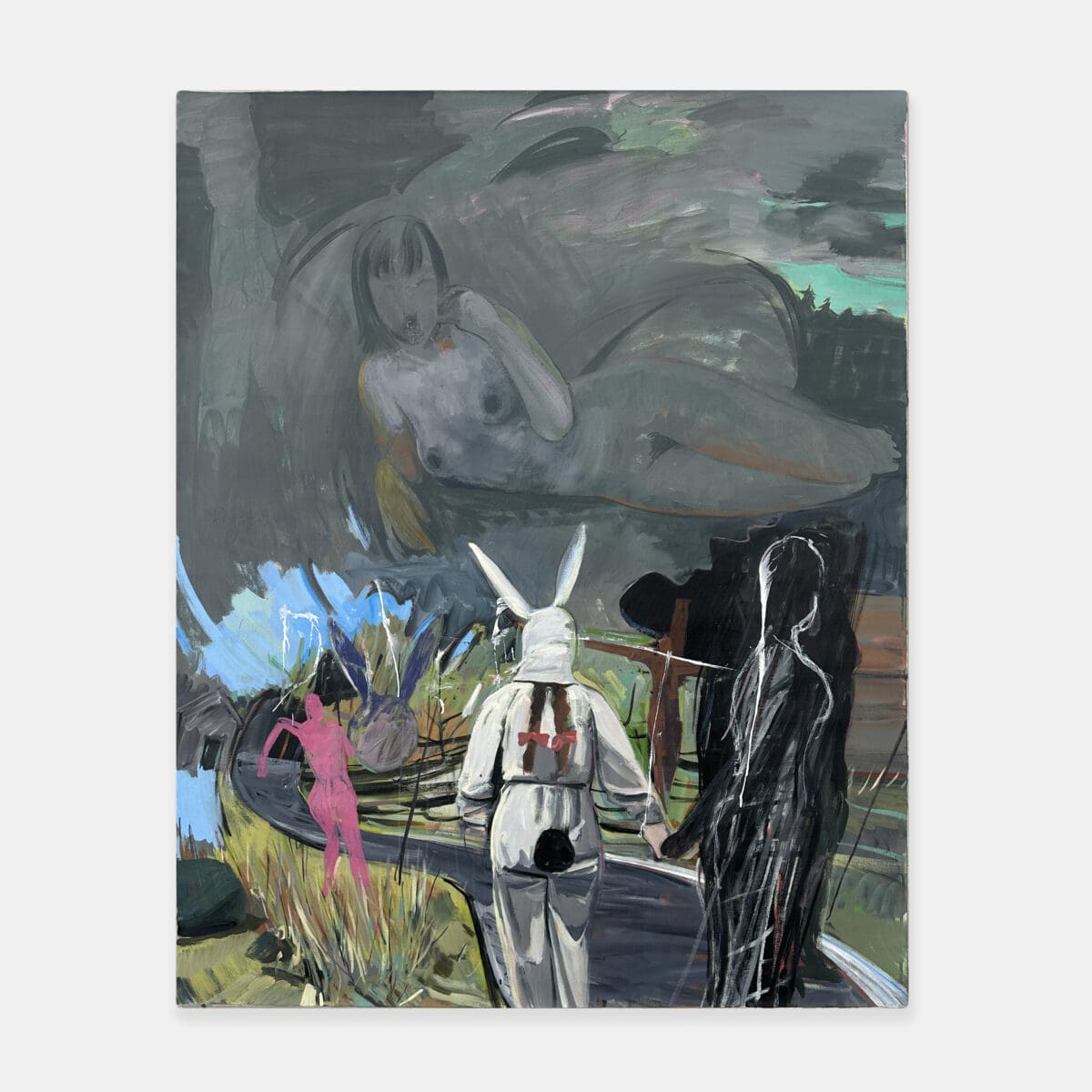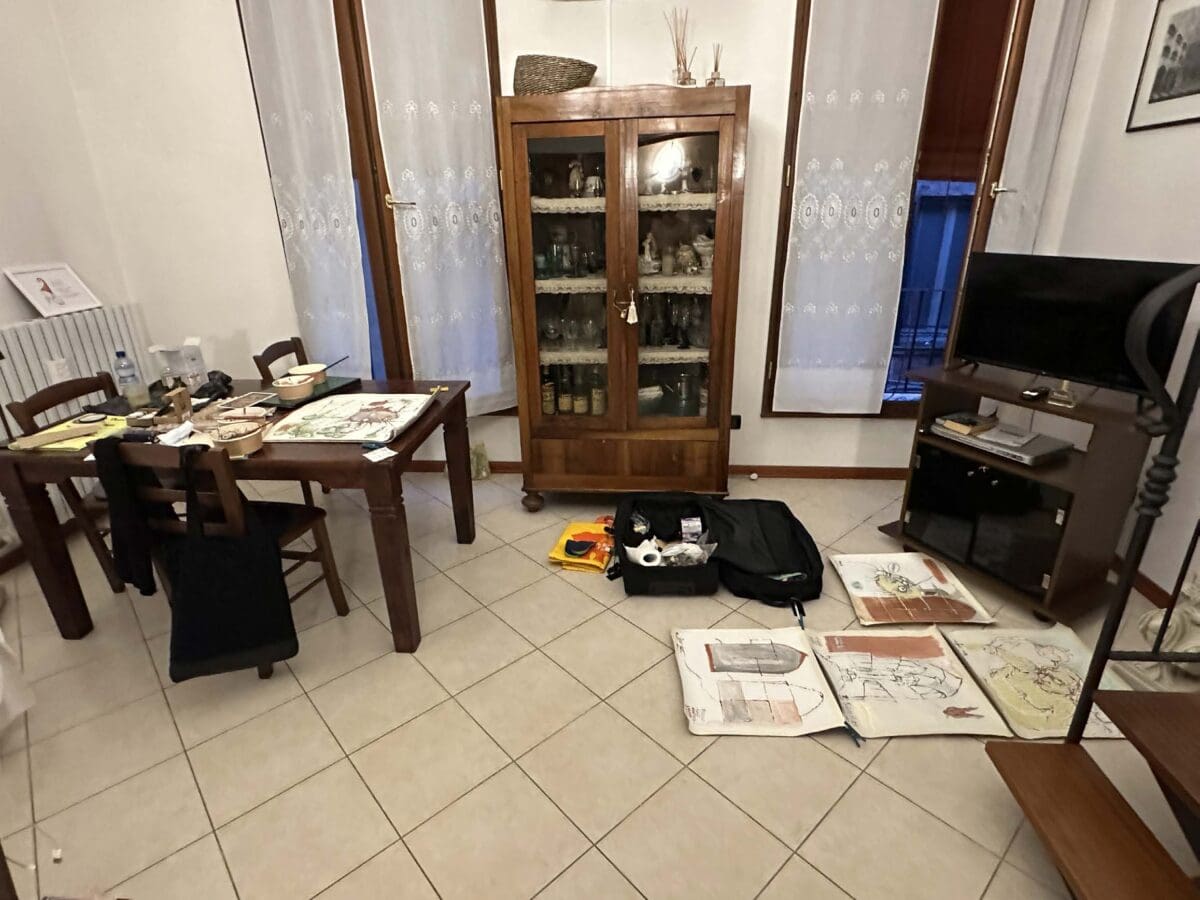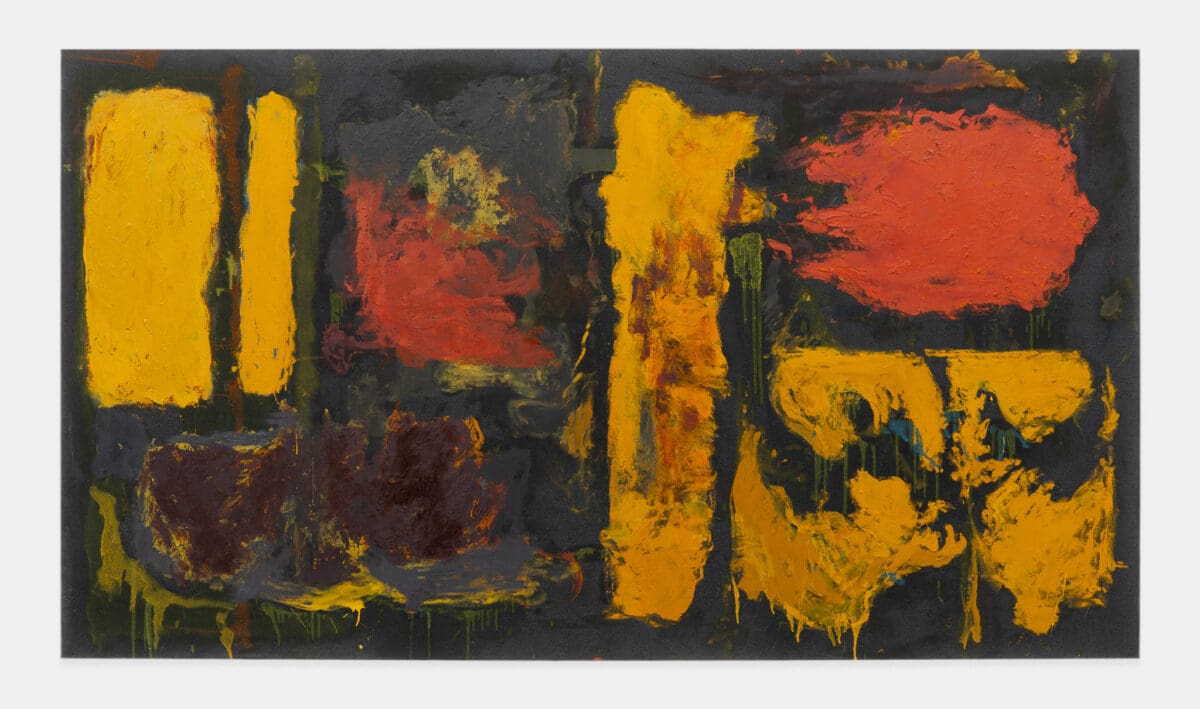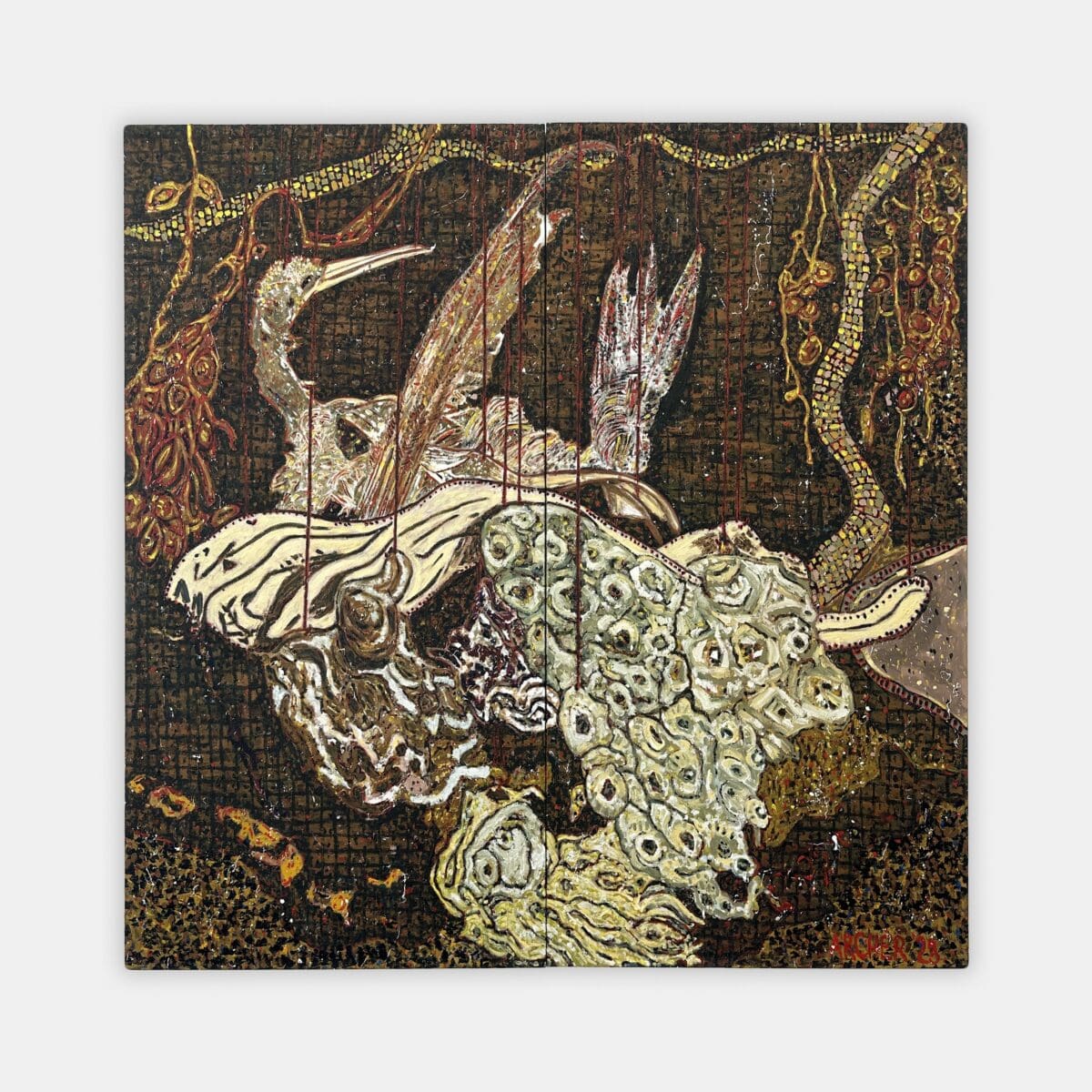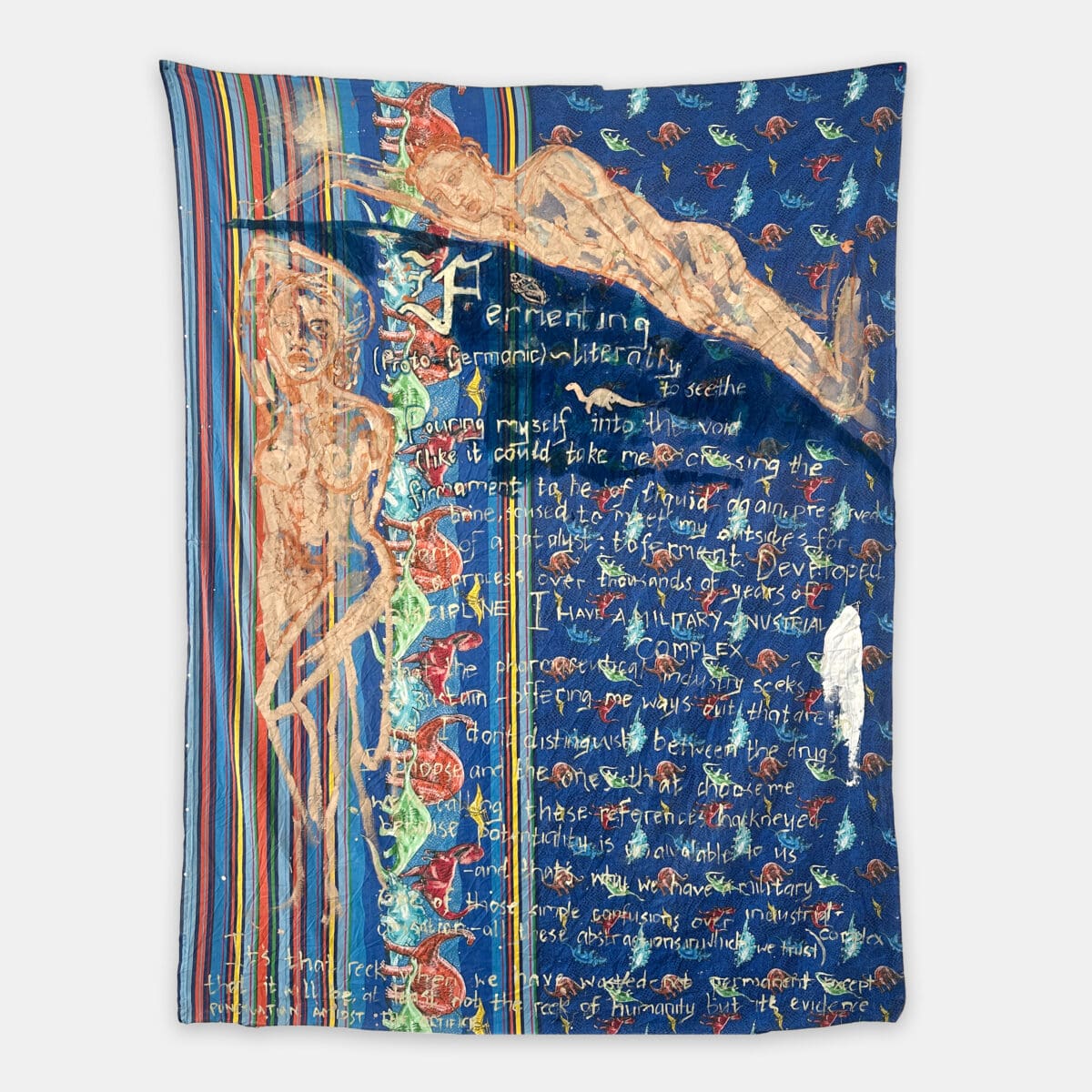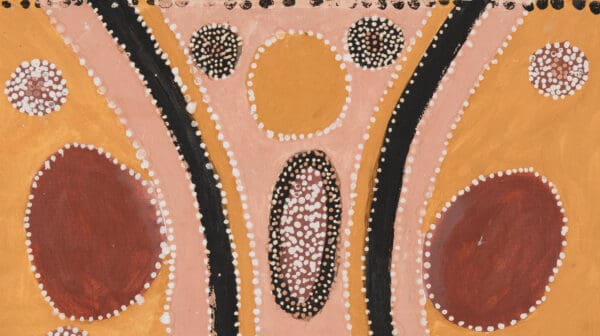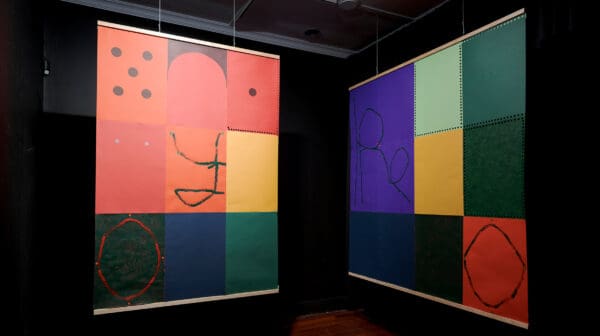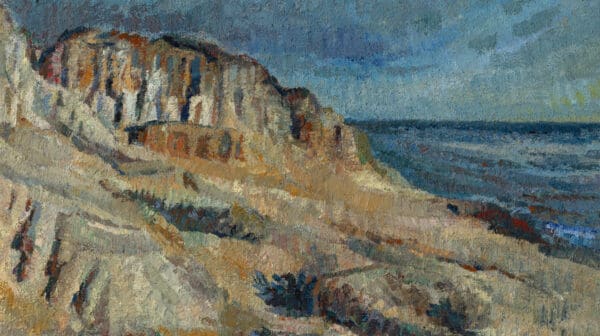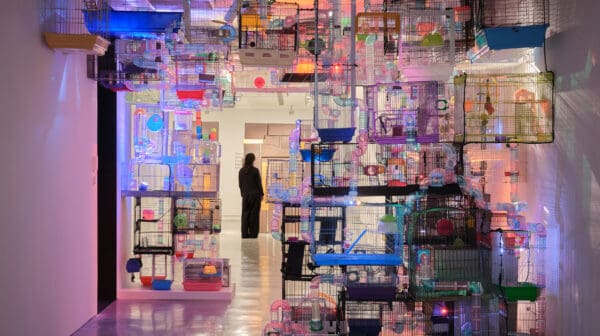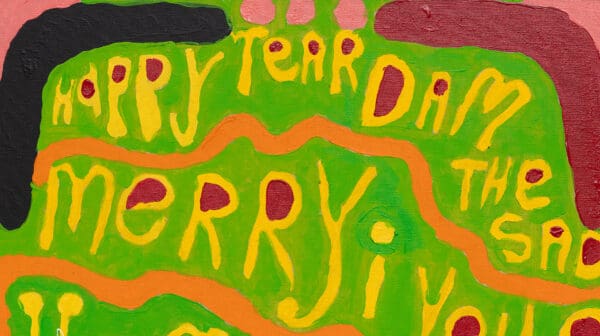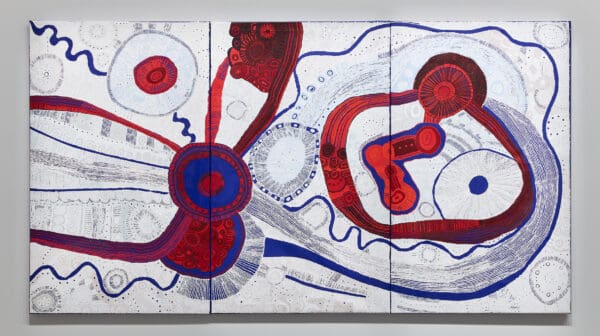Pull up a seat at The Elephant Table. It’s crowded, chaotic, and brimming with exciting connections. The six artists gathered here—Victor Boullet, Christine Burgon, Suzanne Archer, Grace Anderson, Josey Kidd-Crowe and Zoë Marni Robertson—trade stories in paint and protest, abstraction and text. Nothing fits neatly, yet together they build a conversation that feels alive—part confessional, part collision.
For NAP Contemporary co-director Riley Davison, this is among the gallery’s most ambitious exhibitions to date. “The blend of major new works by international and Australian artists is significant,” he says. Each artist deftly draws on the language of painting while pushing its limits—exploring how the medium can carry tension, ambiguity, even discord.
That spirit of dissonance finds vivid expression in the work of Norwegian-born artist Victor Boullet, whose first Australian outing is something of a coup for the Mildura space. His The Sgombro Predella of Mia Farrow and André Previn (2025), a suite of 12 intimately scaled paintings made while travelling in Italy, transforms a tabloid love story into slippery, luminous fragments. The paintings unfold like entries in a visual journal—restless, searching, and buzzing with contradiction. “My work has, since my birth, been rooted in hypocrisy, acceptance and exclusion,” Boullet says on his website. “My work changes as I change as the world changes, I see no need to keep a thread running through the look of my work.”
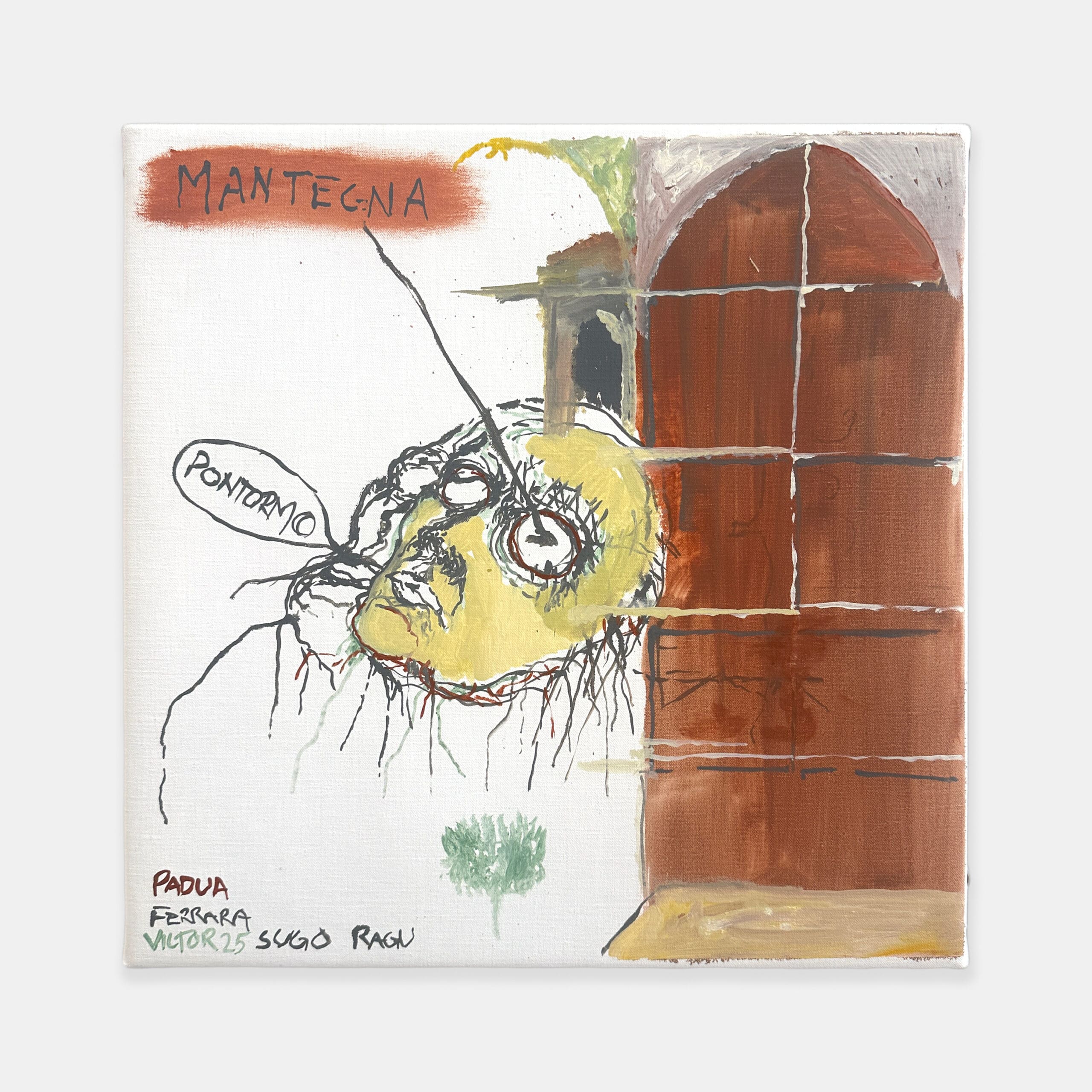
Christine Burgon’s paintings hum with their own enigmatic energy. “I start paintings without much of a strategy and sit alone staring at the same thing for a long time until it starts to change,” she tells me. “The variety and versatility come from that initial improvisational approach, by turns tender and prurient.” Made during a particularly cold summer in her home in northern Minnesota, Burgon’s two new works for the show oscillate between the idyllic and the intrusive. “The nights are very dark, and the nature is quite feral. Often the serene beauty can feel cut across by intrusive thoughts,” she reflects. The resulting gestural, layered imagery sees a cast of figures and forms drift across abstracted landscapes, folding interior and exterior worlds into one.
Grace Anderson also works within her own world—a space of collected fragments, observations, domestic clutter and sonic experimentation. “As a multidisciplinary artist working across painting, sculpture and experimental music, I am interested in how all of these practices can crossover and connect,” she says. For The Elephant Table Exhibition, Anderson is testing new territory in her painting practice. “I have been trying to incorporate figures in my newer paintings but want it to be in an unconventional manner,” she tells. “In this instance I have a girl leaning over a table throwing a black veil over all her collection of objects. It could appear as if she is dancing or performing.” Anderson’s compositions move freely between the introspective and the performative, finding their rhythm in the act of rearrangement.
That fluidity of gesture carries through the exhibition, where experimentation often begins with the materials themselves. Zoë Marni Robertson’s protest banners, painted on second-hand bedsheets with the op-shop tags still attached, explore labour, economy, support and resistance. There’s an immediacy and rawness to their making—half the work is already there, half urgently asserted.
Josey Kidd-Crowe and Suzanne Archer anchor the exhibition’s spectrum. Kidd-Crowe’s paintings, one text-based and one abstract, are lifted from his recent show Sense Units and continue his investigations into language as image and image as thought. Archer’s monumental Beachcombing South Coast (2023)—a two-metre by two-metre painting drawn from her surroundings—offers a grounding counterpoint, the esteemed senior artist’s dense, earthy brushwork reflecting time and place.
The exhibition’s title borrows from The Elephant Table Album, a 1983 compilation of experimental music assembled by writer Dave Henderson. Davison describes it as “a compilation that eschews categorisation of the experimental musicians but is enjoyed in its own ill-fitting kind of way.” As with that record, The Elephant Table Exhibition resists cohesion, instead embracing the pleasure and triumph of what doesn’t quite fit. There are no perfect harmonies here, but the cacophony of six distinct voices caught mid-conversation—each making space at the table for the next.
The Elephant Table Exhibition
NAP Contemporary
(Mildura/Latji Latji and Ngintait Country)
Until 28 November


